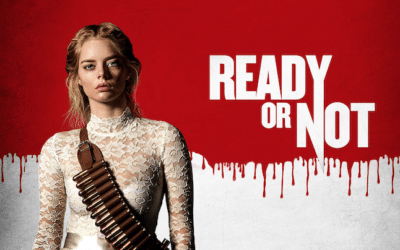
I recently watched a film that I should have seen decades ago: Bridget Fonda and Jennifer Jason Leigh in Single White Female, which came out in 1992. It was one of those movies that featured a woman who becomes increasingly unstable and dangerous, in the tradition of Fatal Attraction, The Hand That Rocks the Cradle and Misery.
Single White Female is suspenseful, sexy and wonderfully woman-centered for a film from the early 1990’s. The movie is sort of a triumph for feminism that stars two women who end up facing off in a duel-to-the-death, similar to those that male characters engage in all the time. There are supporting male actors, but they fill good-guy and bad-guy roles without interfering too much with the main plotline: Ally (Fonda) takes a new roommate named Hedy (Jason Leigh), who tries to move into Ally’s most intimate, personal life
It’s a great ride and I’m sure I would have appreciated it as such if I’d seen it back in 1992. In fact, I don’t know why I didn’t. Both lead actresses are my contemporaries and the story of a single woman trying to live safely in the big city became my life within a year of the film’s release.
Somehow I missed it, but I’m glad because last week I got to see it through the eyes of someone who has some knowledge of mental illness, from which Hedy certainly suffers. Hedy is described as crazy several times in the course of the movie, either by Ally or others, but it’s never with any sympathy for someone suffering from an illness. Each time Hedy’s behavior is referred to as crazy, it’s with fear, in the context of what-are-we-going-to-do-to-protect-ourselves?
The scriptwriters could have substituted the word dangerous for crazy and the lines would read the same. Indeed, this is what society fears: not that mentally ill people have detached from reality, but that we are going to hurt other people. If the worst that mentally ill people did was rock ourselves and mutter in a corner, people wouldn’t fear us as deeply they do. Sure, we all fear what’s unfamiliar, but horror films aren’t made about people who are different from the norm, unless they have also escaped from an asylum or clearly belong there.
Americans tend to vilify the mentally ill, and since we are a highly moralistic culture, we’ve turned mental illness into a sin, like excessive greed or an inability to be faithful to your spouse. Movies like Single White Female turn symptoms like mood instability, idealization/devaluation of others and paranoia into signs of an evil soul who must be punished (preferably killed).
Yes, mental illness can cause destructive behavior, but not because we are bad people who want to ruin the world. Our destructive behavior is an attempt to reduce the emotional pain we’re in. It’s irrational and unproductive and often makes things worse, but not because we want to drag you all down with us. Yes, we’re acting crazy and that can be dangerous to others, but it’s motivated by a desire to feel less alone, less afraid and less hopeless, not a desire to make your life miserable. Categorizing people as good or bad is an easier way to conceptualize your life, but it’s irresponsible and cruel. People with mental illness don’t have the devil inside of us, however you might think we do.
When we are healthy and responsible, those of us who manage a mental disorder tell our friends and family to take care of themselves when we slip, and to help us take care of ourselves by reminding us to take our meds or see our health professionals or go to the gym or walk the dog or whatever helps ground us in reality. I’m very grateful to everyone who knows I’m on an anti-depressant, but doesn’t feel afraid of me or fear that I’ll act unpredictably and make their life difficult.
There’s a scene in Single White Female in which we hear Hedy’s father begging her over the phone to come home. He says, “No doctors this time.” We get a glimpse of Hedy as a lost little girl who needs professional help instead of a bullet through the head. But after Hedy hangs up on her father, the movie continues to show Hedy as an unstoppable force to be feared, not a human being to be treated. Tragically, this is how a lot of people still see the mentally ill and how the media still tends to portray us.



0 Comments